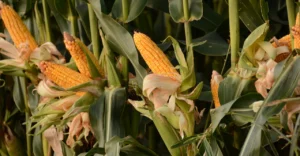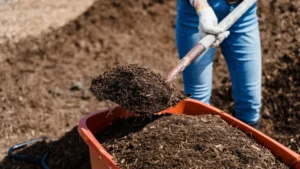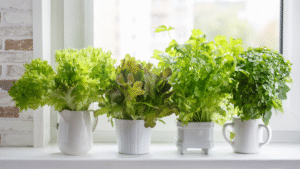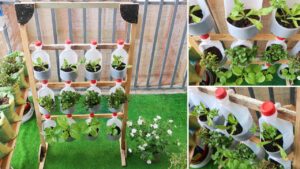Creating a Shade Garden with Hostas and Ferns
Transform those shady spots in your yard into lush, vibrant gardens with the perfect combination of hostas and ferns
Do you have areas in your garden where the sun rarely shines? Those challenging shady spots that seem impossible to beautify? Look no further than the dynamic duo of shade gardening: hostas and ferns. These versatile, hardy plants not only thrive in low-light conditions but also create stunning visual interest with their varied textures, colors, and forms.
In this comprehensive guide, we’ll walk you through everything you need to know about transforming those neglected shady corners into the most enviable parts of your landscape.
Understanding Shade Gardens
Before diving into plant selections, it’s important to understand what constitutes a “shade garden.” Not all shade is created equal, and knowing your specific shade conditions will help you select the right plant varieties.
Types of Shade
- Deep shade: Areas that receive little to no direct sunlight, such as spaces under dense tree canopies or on the north side of buildings.
- Partial shade: Areas that receive 2-4 hours of direct sunlight, usually in the morning or late afternoon.
- Dappled shade: Areas under deciduous trees where sunlight filters through the leaves, creating a spotted pattern of light.
- Seasonal shade: Areas that are shaded only during certain times of the year, such as under deciduous trees that lose their leaves in winter.
According to the USDA Forest Service, “Understanding your site’s light conditions is the first step in creating a successful shade garden.” The agency provides excellent resources on native plant selection for various light conditions.
Benefits of Shade Gardens
Shade gardens offer numerous advantages that make them worth the investment:
- Lower water requirements: Shade gardens typically require less water than full-sun gardens because moisture evaporates more slowly.
- Extended blooming periods: Flowers in shade gardens often last longer without the stress of direct sunlight.
- Reduced weed growth: Less sunlight means fewer weeds competing with your chosen plants.
- Cooling effects: Shade gardens can help reduce the ambient temperature around your home in summer months.
- Wildlife habitat: Many shade-loving plants provide food and shelter for birds, beneficial insects, and other wildlife.
Why Hostas and Ferns Make the Perfect Shade Garden Combination
Hostas and ferns complement each other beautifully in shade gardens for several reasons:
- Contrasting textures: Hostas’ broad, often glossy leaves provide a bold contrast to the delicate, feathery fronds of ferns.
- Varied heights: Ferns often add height and vertical interest, while hostas create a strong ground presence.
- Seasonal interest: Many ferns emerge early in spring, while hostas come into their glory slightly later, providing continuous visual appeal.
- Low maintenance: Both plant groups are relatively easy to care for once established.
- Longevity: Many hostas and ferns are long-lived perennials that will beautify your garden for years to come.
Getting to Know Hostas
Hostas (genus Hosta) are among the most popular shade garden plants in the United States, and for good reason. These versatile perennials offer incredible variety in size, color, and texture.
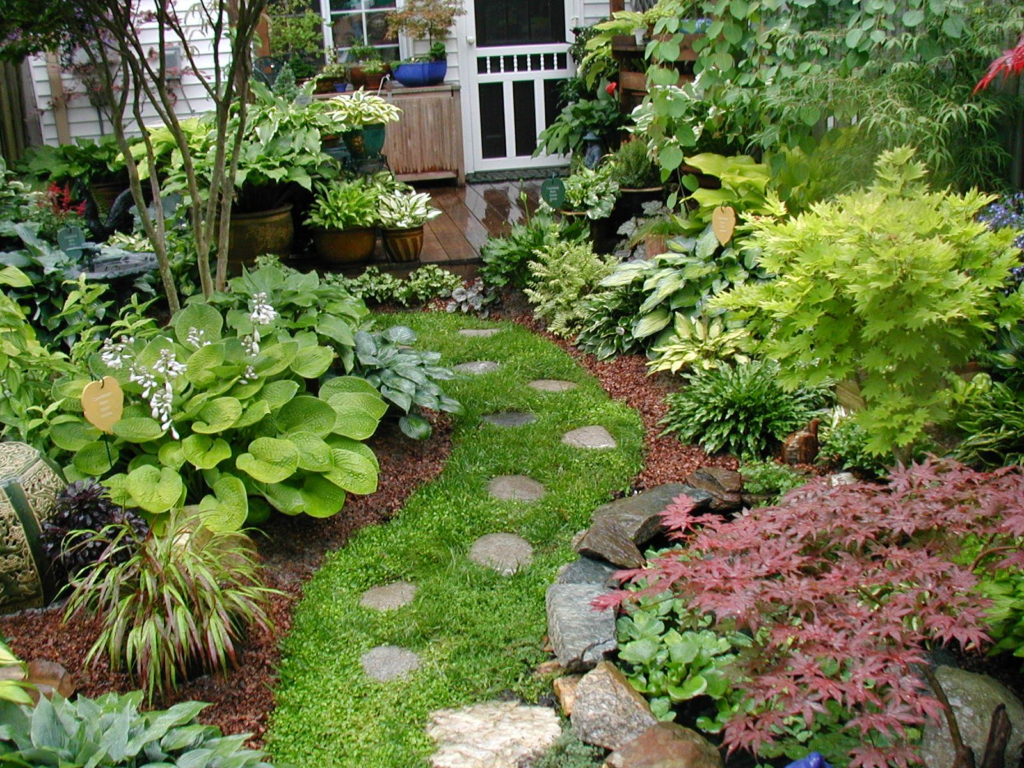
Popular Hosta Varieties
Hostas come in thousands of cultivars, ranging from tiny miniatures just a few inches tall to massive specimens reaching several feet in height and width.
| Hosta Variety | Size Range | Leaf Color | Special Features | Light Preference | USDA Zones |
|---|---|---|---|---|---|
| ‘Blue Angel’ | Large (3-4′ tall, 5-6′ wide) | Blue-green | Heavy substance, white flowers | Deep to partial shade | 3-9 |
| ‘Patriot’ | Medium (15-20″ tall, 3′ wide) | Dark green with white margins | Highly contrasting variegation | Partial shade | 3-9 |
| ‘Sum and Substance’ | Large (3′ tall, 5-6′ wide) | Chartreuse to gold | Slug-resistant, lavender flowers | Partial shade to filtered sun | 3-9 |
| ‘Frances Williams’ | Large (2-3′ tall, 4-5′ wide) | Blue-green with yellow margins | Classic variety, white flowers | Deep to partial shade | 3-9 |
| ‘Fire Island’ | Small (10-14″ tall, 24″ wide) | Bright gold | Red stems, purple flowers | Morning sun, afternoon shade | 3-9 |
| ‘Blue Mouse Ears’ | Miniature (6-8″ tall, 12″ wide) | Blue-green | Thick, rounded leaves | Partial to full shade | 3-9 |
| ‘Empress Wu’ | Giant (3-4′ tall, 5-6′ wide) | Dark green | One of the largest hostas | Partial to full shade | 3-9 |
| ‘June’ | Medium (15″ tall, 30″ wide) | Blue-green with gold center | Slug-resistant, lavender flowers | Partial shade | 3-9 |
Caring for Hostas
Hostas are remarkably low-maintenance once established, but they do have some specific needs:
Soil Requirements
Hostas prefer rich, well-draining soil with plenty of organic matter. While they can tolerate a range of pH levels, they generally prefer slightly acidic soil (pH 6.0-7.0). Before planting, amend your soil with compost or well-rotted manure to improve its texture and fertility.
Watering Needs
While hostas are considered drought-tolerant once established, they perform best with consistent moisture. Aim for about 1 inch of water per week, either from rainfall or irrigation. Water deeply but infrequently to encourage deep root growth. Avoid overhead watering, which can cause leaf spotting and disease.
Fertilization
Feed hostas in early spring as new growth emerges with a balanced, slow-release fertilizer. A second light application in early summer can boost growth, but avoid fertilizing after mid-July in northern zones to prevent tender new growth that could be damaged by early frosts.
Common Pests and Problems
The primary pests affecting hostas are:
- Slugs and snails: These mollusks can devastate hosta foliage overnight. Control them with iron phosphate baits, copper barriers, or by watering in the morning so leaves are dry by evening.
- Deer: Hostas are often called “deer candy” for good reason. If deer are a problem in your area, consider using repellents, fencing, or choosing varieties with thicker, more textured leaves that deer find less palatable.
- Voles: These rodents may damage hosta roots. Planting in wire mesh baskets can help protect the roots.
Exploring the World of Ferns
Ferns are among the oldest plants on Earth, with a fossil record dating back over 360 million years. These ancient plants bring a prehistoric elegance to shade gardens and pair beautifully with hostas.
Popular Fern Varieties for American Gardens
The United States is home to numerous native fern species, and many exotic varieties thrive here as well. Here are some exceptional choices:
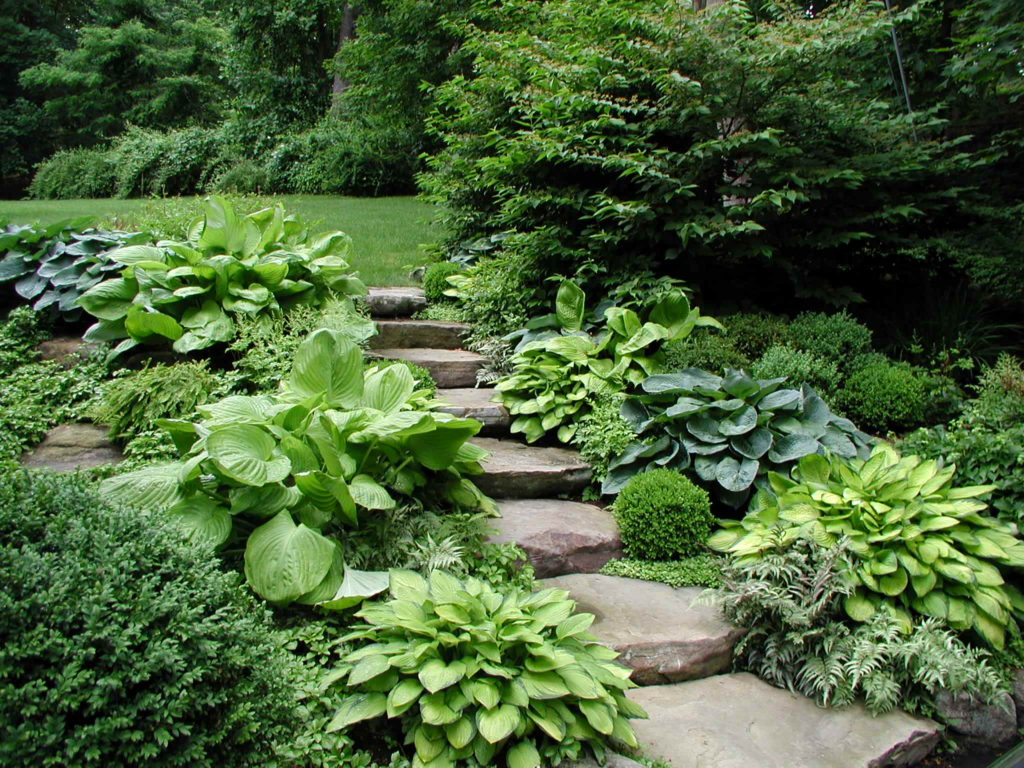
Native American Ferns
- Maidenhair Fern (Adiantum pedatum): Delicate, fan-shaped fronds on black stems; prefers moist, humus-rich soil; USDA zones 3-8.
- Christmas Fern (Polystichum acrostichoides): Evergreen with leathery, deep green fronds; exceptionally tough and adaptable; USDA zones 3-9.
- Cinnamon Fern (Osmundastrum cinnamomeum): Features both vegetative fronds and distinctive cinnamon-colored fertile fronds; loves moisture; USDA zones 3-9.
- Ostrich Fern (Matteuccia struthiopteris): Dramatic vase-shaped form with tall arching fronds; spreads by runners; USDA zones 3-7.
- Lady Fern (Athyrium filix-femina): Lacy, bright green fronds; adaptable to various conditions; USDA zones 4-8.
The U.S. Department of Agriculture provides valuable information on native fern conservation and cultivation through their Natural Resources Conservation Service.
Non-Native But Garden-Worthy Ferns
- Japanese Painted Fern (Athyrium niponicum ‘Pictum’): Silvery-gray fronds with burgundy highlights; USDA zones 4-9.
- Holly Fern (Cyrtomium falcatum): Glossy, leathery fronds resembling holly leaves; semi-evergreen; USDA zones 6-10.
- Autumn Fern (Dryopteris erythrosora): New fronds emerge coppery-red, maturing to green; semi-evergreen; USDA zones 5-9.
- Tassel Fern (Polystichum polyblepharum): Glossy, dark green fronds with distinctive “tassels” at the tips; evergreen; USDA zones 5-8.
Caring for Ferns
While ferns have a reputation for being finicky, many species are actually quite easy to grow if their basic needs are met:
Soil Requirements
Most ferns prefer rich, well-draining soil with high organic content. They generally prefer acidic to neutral pH (5.5-7.0). Adding leaf mold, pine needles, or peat moss to your soil can create ideal conditions for ferns.
Watering Needs
Consistent moisture is key for most ferns. While some species (like Christmas fern) can tolerate dry periods once established, most prefer evenly moist (but not soggy) soil. A 2-3 inch layer of mulch helps retain moisture and moderates soil temperature.
Light Exposure
Contrary to popular belief, few ferns thrive in deep shade. Most prefer dappled light or partial shade, with some species (like lady fern) tolerating quite a bit of sun if given adequate moisture.
Fertilization
Ferns generally need less fertilizer than many other garden plants. A single application of balanced, slow-release fertilizer in spring is usually sufficient. Alternatively, top-dressing with compost annually provides gentle nutrition.
Designing Your Hosta and Fern Shade Garden
Now that you understand the basics of hostas and ferns, it’s time to design your shade garden. Here are some principles to guide you:
Consider Scale and Proportion
- Use larger hostas and ferns (like ‘Blue Angel’ hosta and ostrich fern) as anchor plants or focal points.
- Place medium-sized varieties (like ‘Patriot’ hosta and autumn fern) in the middle ground.
- Edge borders with smaller varieties (like ‘Blue Mouse Ears’ hosta and maidenhair fern).
Play with Texture
One of the greatest strengths of a hosta and fern combination is the textural contrast. Maximize this by:
- Pairing broad-leaved hostas with fine-textured ferns
- Contrasting smooth-leaved hostas with ruffled varieties
- Using ferns with different frond shapes near each other
Create Color Echoes
While predominantly green, hostas and ferns offer subtle color variations that can be emphasized:
- Place blue-green hostas near blue-tinted ferns like Japanese painted fern
- Echo the gold in variegated hostas with the emerging coppery fronds of autumn fern
- Use the reddish stems of some ferns to complement the red petioles of certain hosta varieties
Add Companion Plants
While hostas and ferns create a beautiful garden on their own, adding a few companion plants can enhance seasonal interest:
- Spring bulbs: Plant daffodils, tulips, and other spring bulbs to provide color before hostas and ferns fully emerge.
- Woodland wildflowers: Native wildflowers like trillium, bloodroot, and Virginia bluebells complement the natural feel of a shade garden.
- Astilbe: These feathery plume-like flowers add height and color in summer.
- Heuchera (Coral Bells): Available in a rainbow of foliage colors, these low-growing perennials add year-round interest.
- Tiarella (Foamflower): Delicate white or pink blooms in spring above attractive foliage.
Installation and Establishment
Proper planting and first-year care are crucial for long-term success with hostas and ferns.
When to Plant
The ideal time to plant hostas is early spring, just as they begin to emerge, or in early fall (at least 6 weeks before first frost). Ferns are best planted in spring as new growth begins, giving them a full season to establish before winter.
Planting Process
- Prepare the planting area by removing weeds and amending the soil with compost.
- Dig holes approximately twice as wide as the root ball but no deeper.
- Position plants at the same depth they were growing in their containers.
- Backfill with soil, firming gently to eliminate air pockets.
- Water thoroughly after planting.
- Apply a 2-3 inch layer of mulch, keeping it a few inches away from plant crowns to prevent rot.
First-Year Care
During their first year, hostas and ferns need extra attention:
- Watering: Keep soil consistently moist (but not waterlogged) throughout the first growing season.
- Protection: Shield delicate new growth from late frosts with floating row covers if necessary.
- Mulching: Maintain a 2-3 inch layer of organic mulch to conserve moisture and suppress weeds.
- Patience: Some hostas and ferns may not reach their full size or show their true colors until their second or third year.
Seasonal Maintenance
Your shade garden will require different care throughout the year:

Spring Tasks
- Remove winter mulch gradually as temperatures warm.
- Cut back any damaged or dead fronds from evergreen ferns.
- Divide overcrowded hostas before new growth emerges.
- Apply slow-release fertilizer as new growth begins.
- Watch for and control slugs and snails as tender new growth appears.
Summer Tasks
- Water during dry periods, especially if plants show signs of stress.
- Remove spent hosta flower stalks if desired for a tidier appearance.
- Check for insect pests and treat as necessary.
Fall Tasks
- Clean up fallen leaves to prevent disease.
- Cut back dead hosta foliage after frost has killed it back.
- Leave evergreen fern fronds intact for winter interest.
- Apply a fresh layer of mulch after the ground freezes to prevent frost-heaving.
Winter Protection
In colder regions (USDA zones 3-5), some extra winter protection may be beneficial:
- Apply a loose layer of pine needles, straw, or shredded leaves after the ground freezes.
- Consider anti-desiccant sprays for evergreen ferns in exposed locations.
- Use burlap screens to protect from winter winds in exposed sites.
Propagation Techniques
Both hostas and ferns can be propagated to expand your garden or share with friends.
Dividing Hostas
Hostas are typically divided in early spring or fall:
- Lift the entire clump with a garden fork.
- Use a sharp knife or spade to cut the clump into sections, ensuring each division has both roots and shoots.
- Replant divisions at the same depth as the original plant.
- Water thoroughly and mulch.
Propagating Ferns
Ferns can be propagated by:
- Division: Similar to hostas, many ferns can be divided in spring.
- Spores: For the patient gardener, ferns can be grown from spores collected from the undersides of fertile fronds.
- Bulbils: Some ferns, like the walking fern, produce tiny plantlets on their fronds that can be removed and planted.
Troubleshooting Common Issues
Even in well-maintained gardens, problems can arise. Here are solutions to common issues:
Yellowing Hosta Leaves
Potential causes include:
- Too much sun: Move to a shadier location
- Nutrient deficiency: Apply balanced fertilizer
- Overwatering: Improve drainage or reduce watering
- Virus: Remove and destroy infected plants
Browning Fern Fronds
Potential causes include:
- Insufficient moisture: Increase watering and mulch
- Too much direct sun: Move to a shadier location
- Fertilizer burn: Flush soil with water and reduce fertilizer
Slugs and Snails
Control methods include:
- Hand-picking at night
- Iron phosphate baits (safe for pets and wildlife)
- Copper barriers
- Coffee grounds or diatomaceous earth sprinkled around plants
Conclusion
Creating a shade garden with hostas and ferns transforms challenging areas into cool, lush retreats that require minimal maintenance once established. By understanding the needs of these complementary plant groups and following sound design principles, you can create a stunning landscape feature that improves with age.
Whether you have a small corner under a tree or an entire woodland garden, the combination of hostas and ferns offers endless possibilities for creativity and enjoyment. Start small, learn as you go, and watch your shade garden evolve into a refreshing oasis that will be the envy of your neighborhood.
Remember that your local Cooperative Extension Service, in partnership with the USDA, can provide region-specific advice on plant selection and care. Find your local office through the National Institute of Food and Agriculture for personalized guidance on your shade gardening journey.

